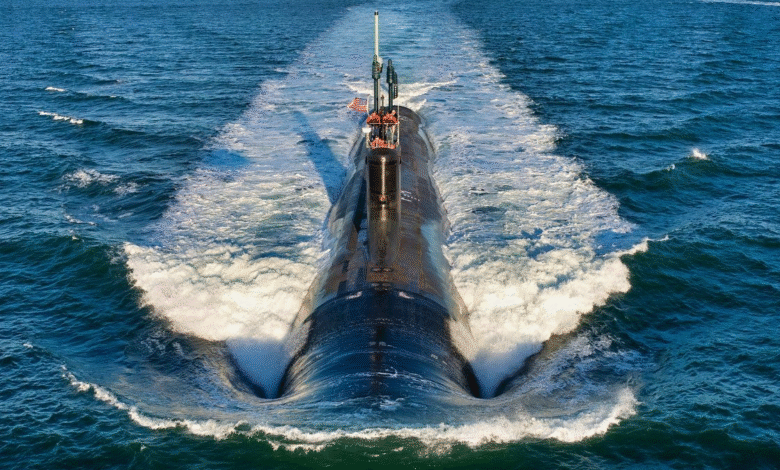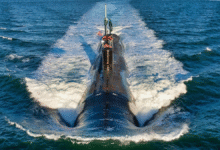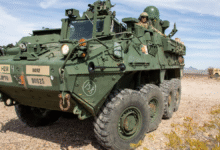Norwegian Fishermen and US Submarine: A Cold Sea Encounter

A deep dive into the mysterious encounters between Norwegian fishermen and US submarines in the Arctic waters, exploring geopolitical intrigue, local narratives, and the science beneath the surface.
Fishermen, Fjords, and a Flare of Curiosity
It began like any other chilly morning off the coast of Norway. The salty wind brushing over the fjords, seagulls soaring above, and a group of rugged Norwegian fishermen casting their nets into the deep, icy waters. But something peculiar caught their attention that day. Beneath the calm waves, a massive, dark shape stirred the sea—a US submarine.
These kinds of sightings aren’t necessarily rare in this region. The North Atlantic and Arctic waters have long been areas of quiet activity involving submarines. But for the Norwegian fishermen, this wasn’t just about a shadow in the water; it was about safety, sovereignty, and a strange relationship forged between local livelihoods and global naval movements.
As the submarine surfaced just meters away, the fishermen remained calm. Many had seen such encounters before. But questions still swirled: Why are US submarines so often here? What are they doing? And what do the fishermen truly think?
Why Are US Submarines in Norwegian Waters?
The presence of US submarines in Norwegian and Arctic waters is not new. These encounters stretch back decades, rooted in Cold War geopolitics and modern-day strategic interests. The Arctic is rich in resources and vital shipping lanes. More importantly, it’s a strategic choke point for global military powers.
The US Navy frequently conducts exercises in these cold waters, often in coordination with NATO allies, including Norway. These waters provide a stealthy route for submarines to move between the Atlantic and Arctic Oceans. For submariners, the terrain is perfect for covert movement and training. For fishermen, it’s a mixed bag of awe, tension, and occasional frustration.
Beyond official exercises, some believe the real reason for these submarines is surveillance—keeping an eye on Russian submarines, which also patrol these waters. The North Atlantic, especially the GIUK gap (Greenland-Iceland-UK), remains a strategic maritime passage. Norwegian fishermen, whether knowingly or unknowingly, often find themselves in the middle of this underwater chess game.
The Fishermen’s Perspective: Between Respect and Concern
Fishermen in Norway are a resilient, pragmatic bunch. Generations have braved the North Sea and Arctic weather to earn their keep. But when a steel leviathan the size of a football field emerges from the depths just meters from their boat, even the toughest among them get wary.
Some fishermen view the submarines with a sense of wonder. They speak of the immense engineering and the quiet power of these vessels. Others, especially those whose gear has been damaged or nets entangled, feel less charitable. For them, the submarines are a silent menace to their livelihoods.
There have been calls for better communication and coordination between military forces and local fishermen. Incidents where gear is damaged or fishing zones are disrupted are not uncommon. Yet, most fishermen remain cooperative, understanding the broader picture. Norway’s own military works closely with NATO, and many fishermen have family members serving in defense forces. Still, the balance between cooperation and confrontation is delicate.
Underwater Encounters: True Stories from the Sea
One of the most discussed incidents happened off the coast of Tromsø, where a group of fishermen spotted what appeared to be a whale at first. As they got closer, they realized it was a surfacing US submarine. The crew even exchanged waves before diving back into the icy depths.
In another case, a net worth thousands of dollars was torn apart during a nighttime pass of a NATO exercise. The fisherman, frustrated, filed a claim, only to be met with bureaucracy. Norwegian Fishermen and US Submarine Yet, most of these stories remain confined to local tales told in dockside pubs and harborside coffee shops.
These aren’t hostile encounters, and no serious injuries have been reported. But they illustrate the coexistence of military strategy and civilian livelihood in one of the most remote and contested regions of the world.
“We know they’re out there, and they know we’re here. It’s like sharing a giant, cold, salty office space,” said one fisherman with a grin.
Geopolitics Beneath the Waves

The Arctic is heating up, and not just because of climate change. Nations are vying for control, influence, and access. The melting ice is opening new routes and exposing untapped natural resources. The US, Russia, China, and NATO are all increasing their presence.
For the US Navy, submarines offer a quiet, strategic advantage. They can go where satellites can’t see. Their missions might include intelligence gathering, anti-submarine warfare, and showing presence without making headlines.
Norway, though a peaceful and democratic nation, finds itself geographically and politically pivotal. It has long coastlines, access to the Arctic, and is a loyal NATO member. This makes Norwegian waters an unavoidable area of interest for submarines.
In this setting, fishermen become inadvertent witnesses to silent underwater rivalries. While they go about their routines, a whole different world unfolds beneath them.
The Role of Technology in Avoiding Conflict
Thanks to advancements in marine and naval technology, these encounters have become safer. Submarines use sonar and GPS to detect surface vessels, and fishing boats increasingly employ radar and satellite communication to track unusual activity.
Still, accidents happen. Training missions sometimes go dark, using “silent running” techniques that avoid detection. In these moments, the chances of unintended collisions or gear entanglement rise.
Efforts are ongoing to improve coordination. Norway’s fisheries and defense departments have established communication channels with NATO forces to notify fishing communities about upcoming exercises. But real-time communication at sea remains a challenge.
Environmental Concerns: What Lies Beneath
Fishermen aren’t just worried about their nets. Many raise concerns about the environmental impact of submarines. The Arctic is a delicate ecosystem. The noise from submarines can disturb marine life, especially mammals like whales and seals that rely on echolocation.
There’s also the fear of nuclear-powered submarines operating so close to fishing grounds. While modern subs are designed with safety in mind, history remembers incidents like the Kursk disaster, and the potential for leakage or contamination cannot be fully ignored.
Environmental watchdogs have urged more transparency about naval activity in the Arctic. They argue that increased military presence could lead to ecological damage if not managed responsibly.
A Unique Coexistence in Cold Waters
The story of Norwegian fishermen and US submarines is more than a curiosity. It’s a living example of how global politics intersects with local realities. These fishermen aren’t just harvesting cod or herring; they’re operating in a world stage where every net cast might overlap with classified operations.
Yet, there’s a certain harmony in this tension. Both the fishermen and the submariners respect the sea. They know its dangers, its silence, and its power. And in that mutual understanding lies a form of coexistence not found in many places on Earth.
Table: Key Contrasts Between Norwegian Fishermen and US Submarine Missions
| Aspect | Norwegian Fishermen | US Submarine Operations |
|---|---|---|
| Purpose | Livelihood, food production | Surveillance, defense, strategy |
| Visibility | Surface, visible to others | Stealthy, hidden |
| Equipment | Nets, sonar, small boats | Advanced sonar, weapons systems |
| Environmental Impact | Minimal, sustainable practices | Potential noise and nuclear concerns |
| Coordination with Others | Local networks and agencies | Military secrecy and international rules |
Frequently Asked Questions (FAQs)
Why are US submarines in Norwegian waters? US submarines operate in Norwegian waters primarily for strategic and defense-related missions, often as part of NATO exercises or to monitor geopolitical movements, especially in the Arctic.
Do Norwegian fishermen interact with US submarines? Yes, though not frequently, fishermen have reported sightings and encounters. Most are peaceful, but there have been instances of gear damage and unexpected surfacing.
Are these submarines dangerous to fishing activities? While not directly threatening, submarines can disrupt fishing patterns, damage nets, or disturb marine life. Communication between forces and fishermen helps reduce risks.
What is Norway’s role in NATO submarine activity? Norway is a NATO member and provides strategic access to the Arctic. Its waters are crucial for submarine operations, and Norwegian authorities coordinate with allied naval forces.
Has there ever been a major incident between fishermen and submarines? No major disasters have been recorded, but there have been minor incidents involving equipment damage and close encounters.
Are submarines affecting the Arctic environment? There is concern about noise pollution, potential nuclear risks, and disruption to marine ecosystems. Environmental groups advocate for more regulation and transparency.
Conclusion: A Cold Yet Cooperative Connection
The tale of Norwegian fishermen and US submarines is one of silent respect and mutual presence. Both sides operate in a region of profound natural beauty and strategic significance. While their purposes differ—one to feed communities, the other to secure them—they share the sea and its secrets. With better communication, awareness, and respect, this unusual coexistence might continue as one of the more curious partnerships of our time.





